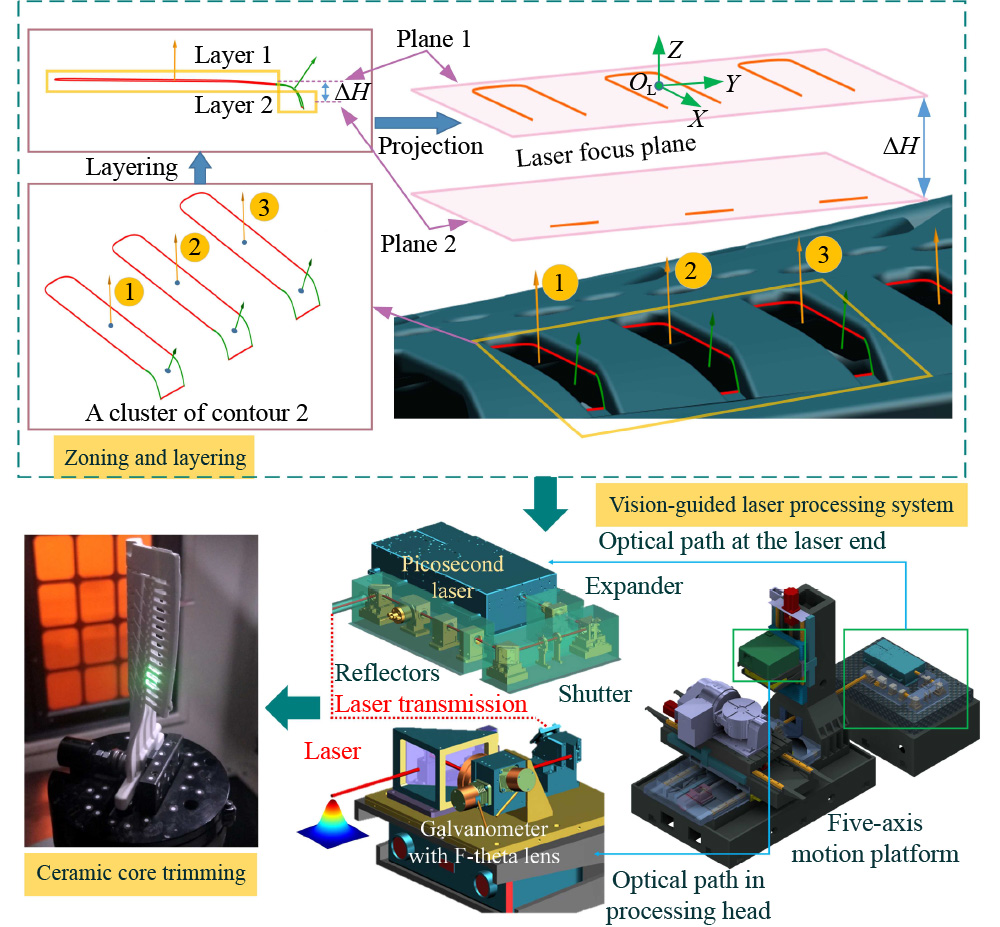The trimming problem of the ceramic core can be summarized as the laser trimming problem for complex non-datum components. Researches on this problem are rare at present, and similar research mainly focuses on the repair of damaged areas of aero-engine blades [
19–
23]. Yilmaz et al. [
19] investigated the repair methodology of thin-curved blades. In this methodology, non-contact optical measurement equipment is used to obtain 3D data on the surface of the damaged blades. Furthermore, a three-axis machining strategy is employed to remove the excess weld material. Both smoothness and error requirements of the repair path are investigated in depth. Bremer [
21] described the importance of automatic blade repair and provided a complete set of blade automatic repair processes, including inspection, weld preparation, welding and reprofiling. In another study [
20], the authors detailed reverse engineering technology application in blade repair. Liu et al. [
22] investigated in detail the application of additive manufacturing technology for repairing military aircraft components. Gao et al. [
23] described 3D non-contact measurement technology in blade repair and equipment integration. Chen et al. [
24] proposed a repair method based on non-damaged blades in service at the same time instead of the original design model so that the reconstructed target repairing surface will more accord with the deformation state of damaged blades. However, the research above mainly focuses on the repair of metal components. Compared with ceramic cores, the repair of metal components such as blades focuses on the reconstruction of the damaged part of the blade, and rarely considers the deformation of blades, and there is no positioning problem. At the same time, most of the utilized processing systems are traditional cutting machine tools.



























